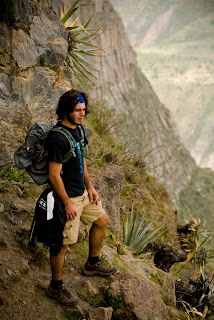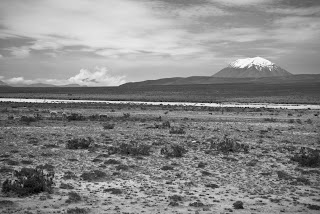 As we cruised East along the Beagle channel the sun was setting over the stern of the Polaris and the snow capped peaks of the Isla Navarino and the Mitre Peninsula shepherded us towards the South Atlantic. The waves lapping against the hull and lolloping motion of the ship lulled us into a false sense of security as dusk turned to night.
As we cruised East along the Beagle channel the sun was setting over the stern of the Polaris and the snow capped peaks of the Isla Navarino and the Mitre Peninsula shepherded us towards the South Atlantic. The waves lapping against the hull and lolloping motion of the ship lulled us into a false sense of security as dusk turned to night. Swinging out of the top bunk and dropping to the floor, my first morning steps slammed me into the door to the bathroom. A little stunned, I was thrown back across the room onto the bench that runs below the porthole. The shower would have to wait. My memories of Drake’s passage will always be of the motion induced by the pulsating swell of the Southern Ocean. Uninhibited by land, the swell progresses clockwise around the continent of Antarctica only rising and falling in response to the wind and depth. At the start the swell and wind were aligned behind us and the motion was predominantly up an down. Five metre swells were the norm and the air temperature hovered around 8-9 degrees celsius. As we crossed the Antarctic convergence, where the colder water of the Antarctic gyre meets the warmer water of the South Atlantic, the low pressure system deepened and the wind picked up, shifting the swell to our starboard beam. Already queasy from a day of heavy swells, the passenger numbers on deck dwindled as fast as the pot of Dramamine on the reception desk.
As the second day dawned the swell began to rise further until it reached 10-12 metres on the beam. Walking around the ship became a mission in itself. The number of attendees for the lectures on bird life, marine mammals and antarctic history dwindled as people retired to their bunks. Those that did brave the lectures held on to the fixed tables as their chairs lifted and shifted as the boat rolled through 30 degrees each side of vertical. At night whilst laid in our bunks, perpendicular to the centre line of the ship, we shifted from almost standing on the wall to protecting our heads from banging against the wall behind us. The bunks were sprung allowing the vertical motion of the ship to make us appear weightless for a moment before dropping back to the mattress and a chorus of squeaks.
As the sun began to set on the second day of the crossing the first icebergs came into view signaling the approach of the South Shetland islands. These tabular icebergs, rising over one hundred metres from the sea, may have been floating for over a year since they were sheared from the terminal face of the Ross ice shelf. As they are taken north-east by the current they float around the coast being gradually eroded by the constant action of the sea. Over time the icebergs are eroded under water and the centre of gravity shifts tilting the table top and exposing the rounded sections that were previously submerged. With the arrival of the icebergs and shelter of the South Shetland islands the swell began to reduce allowing us our first good night’s sleep.




-8.jpg)
-7.jpg)
.jpg)

